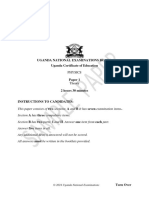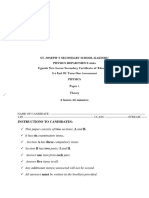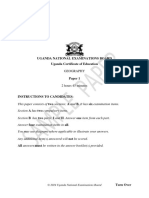0% found this document useful (0 votes)
32 views2 pagesSimple FM Transmitter Project Report
The document outlines the design and construction of a simple FM transmitter circuit using ICs to transmit audio signals over short distances. It details the required components, circuit description, working principle, and applications of the transmitter. The project serves as an educational tool for understanding FM modulation and radio frequency transmission.
Uploaded by
alranfal007Copyright
© © All Rights Reserved
We take content rights seriously. If you suspect this is your content, claim it here.
Available Formats
Download as DOCX, PDF, TXT or read online on Scribd
0% found this document useful (0 votes)
32 views2 pagesSimple FM Transmitter Project Report
The document outlines the design and construction of a simple FM transmitter circuit using ICs to transmit audio signals over short distances. It details the required components, circuit description, working principle, and applications of the transmitter. The project serves as an educational tool for understanding FM modulation and radio frequency transmission.
Uploaded by
alranfal007Copyright
© © All Rights Reserved
We take content rights seriously. If you suspect this is your content, claim it here.
Available Formats
Download as DOCX, PDF, TXT or read online on Scribd
/ 2



























































